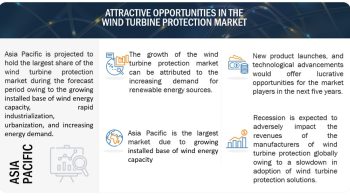
The global microgrid control system market is projected to reach USD 3.6 billion by 2023, at a CAGR of 13.01%, from an estimated USD 2.0 billion in 2018. Factors such as growing need for reliable & resilient power across the globe, growing investments in microgrid projects, and rising share of power generation through renewable sources of energy are likely to drive the microgrid control system market during the forecast period. Various market regulations and standards have been developed by governments of different countries or by individual committees belonging to the energy & power industry worldwide. For instance, IEEE Standard 2030.7-2017 is the IEEE-approved draft standard for the Microgrid Energy Management System (MEMS). It is the specification of microgrid controllers to enable interoperability of the different controllers and components needed to operate MEMS through cohesive and platform-independent interfaces.
The Middle East & Africa is estimated to be the fastest growing market for microgrid control system during the forecast period. The increasing generation capacity, focus on renewables, and plans to increase the electrification rate in countries such as South Africa, Nigeria, and Saudi Arabia are expected to drive the microgrid control system market in the region.
Download PDF Brochure @ https://www.marketsandmarkets.com/pdfdownloadNew.asp?id=242416568
The microgrid control system market, by grid-type, is segmented into on-grid and off-grid. The off-grid/islanded/remote grid segment is estimated to be the fastest growing segment during the forecast period. Along with the expansion of electricity infrastructure in developing countries, many remote microgrids are being designed to be self-sufficient to cater to complex setups such as remote islands or distant villages where transmission via traditional electric utility players is not viable. As these microgrids barely connect to a larger grid and operate in island mode, there exists a greater need for the off-grid microgrid control system and energy storage. Many of these microgrid control systems are preferred to reduce diesel fuel consumption by integrating solar PV and distributed wind.
The report segments the microgrid control system market, by ownership, into private and public. The private segment is expected to grow at the fastest rate during the forecast period. It finds its major application in defence, university campus and commercial, and industrial end- users. In private utility, the ownership lies with the shareholders or investors. These private utilities purchase electricity through contracts or operate their own generation facilities.
The microgrid control system market, by end-user, is segmented into utilities, campuses & institutions, commercial & industrial, and others. Others include defense & datacenters. The utilities segment is estimated to be the fastest growing segment during the forecast period. Increasing contribution to the growth of utilities segment during the forecast period. This growth is attributed to investments by power utilities to replace, upgrade, and expand the prevailing aging distribution infrastructure, investments in electrification projects and transition toward clean energy sources.
Request Sample Pages of the Report @ https://www.marketsandmarkets.com/requestsampleNew.asp?id=242416568
The report segments the microgrid control system market, by components, into hardware and software. The hardware components of the microgrid control system include the physical components such as CPU module, digital input module, digital output module, analog input/output module, local Controller, data logger, data recorder, relays, meters, and communication network. The increasing number of microgrid projects in large power plants and high demand from process industries such as manufacturing, oil & gas sector, mining, steel, and chemical would drive the hardware segment of the microgrid control system market. Most of the players are trying to consolidate their market position through strategies such as mergers and acquisitions. For instance, ABB (Switzerland) acquired Powercorp (Australia) for strengthening its portfolio of control technologies used to manage the integration of renewable energy into conventional micro and remote island grids. Several companies in the US are investing in grid-modernization. For example, San Diego Gas & Electric will invest USD 3.5 billion over 15 years and Commonwealth Utilities Corporation around USD 2.6 billion over 10 years. As Distributed Energy Resources (DERs) presents new revenue opportunities in the grid network, it also calls for a proactive program that would help utilities to supply power in an efficient manner.

